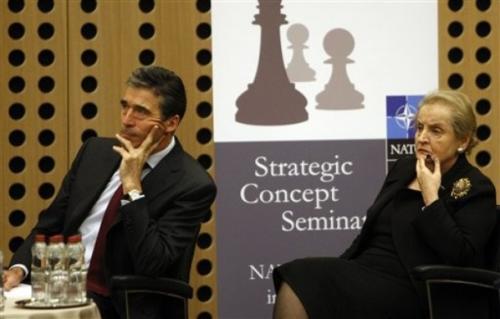 From Andrew Michta, Center for European Policy Analysis : In recent years, different security optics of the members have splintered NATO. The United States wants an expeditionary alliance with a global reach, able to deliver security where needed. The Western Europeans hold to a vision of a regional club of liberal democracies that continues to anchor America in Europe but does business close to home. The Central Europeans tend to hew to the U.S. vision, but with the clear expectation of a quid pro quo: that Washington will stand by them should they find themselves pressured by Russia. NATO is also divided on how to reform its decision-making processes and how to fund and resource its home and away missions. …
From Andrew Michta, Center for European Policy Analysis : In recent years, different security optics of the members have splintered NATO. The United States wants an expeditionary alliance with a global reach, able to deliver security where needed. The Western Europeans hold to a vision of a regional club of liberal democracies that continues to anchor America in Europe but does business close to home. The Central Europeans tend to hew to the U.S. vision, but with the clear expectation of a quid pro quo: that Washington will stand by them should they find themselves pressured by Russia. NATO is also divided on how to reform its decision-making processes and how to fund and resource its home and away missions. …
The overarching problem is how to define the core business of NATO, which since the Cold War has increasingly become a veritable smorgasbord of every security-related task: cyber defense, energy security, WMD proliferation, stability and reconstruction missions, out-of-area missions, territorial security, enlargement, partnership-building, and norm-setting and democratization. Recently, there have been suggestions that NATO should also be ready to address the consequences of climate change — a point made on several occasions by the new Secretary General. But an alliance that purports to defend against all threats will be unable to defend well against the critical ones. Instead of endlessly multiplying NATO’s security tasks, the discussion over the New Strategic Concept needs to reorder the question: define NATO’S appropriate roles and go from there. …
To maintain allied cohesion and provide strategic reassurance to the allies along the periphery, the New Strategic Concept has to capture and reinforce one core premise: when it comes to out-of-area and territorial defense, NATO’s mission can never be an either-or proposition. (photo: AP)
Image: ap_4_2_10c.jpg
